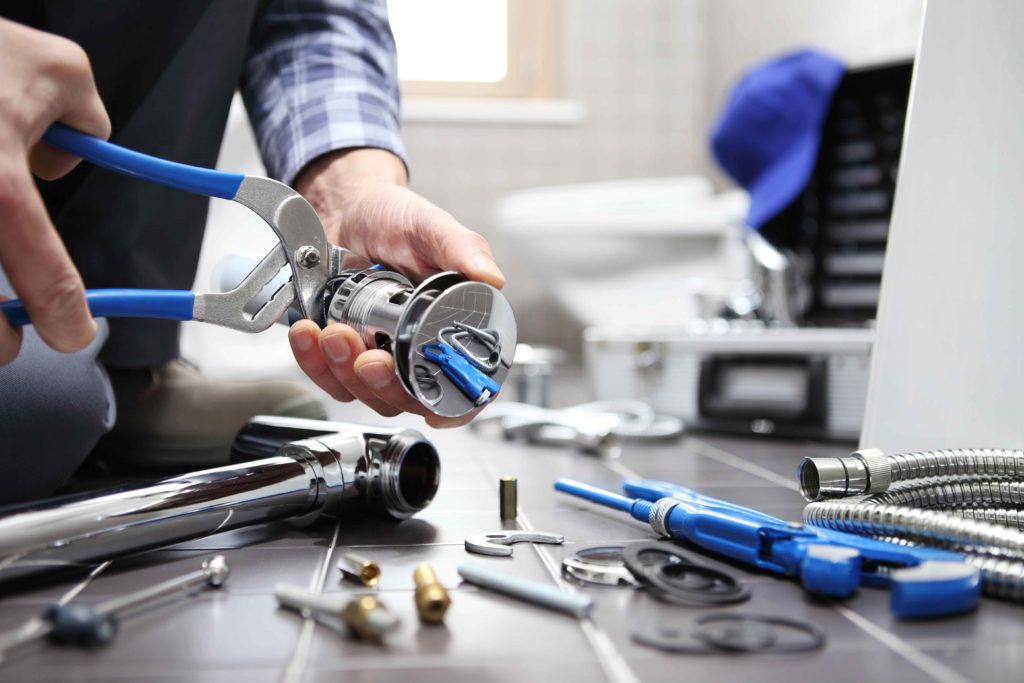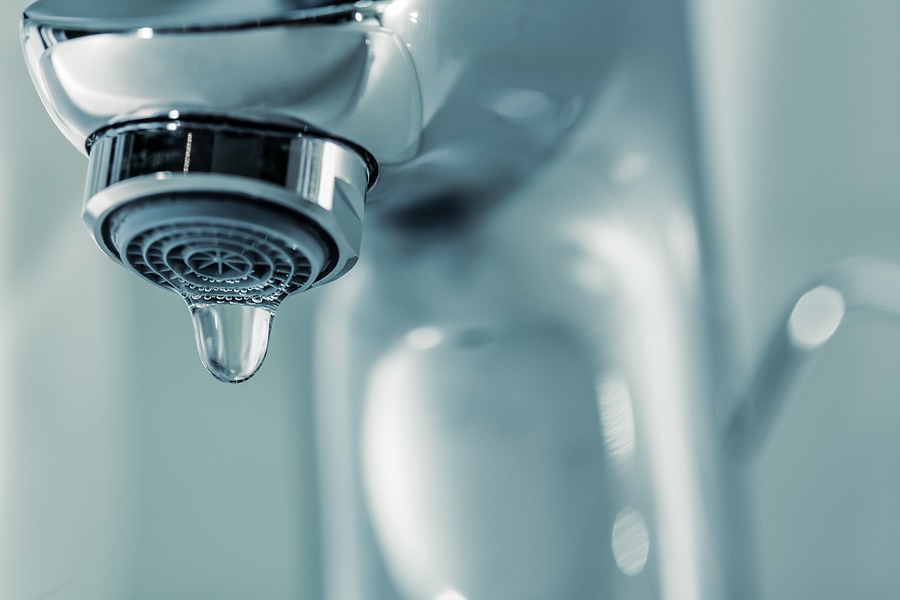Exploring the Value of Resolving a Leaking Faucet
Exploring the Value of Resolving a Leaking Faucet
Blog Article
They are making several great observations about Should I Repair or Replace a Leaky Faucet? in general in this great article in the next paragraphs.

Trickling taps may appear like a minor trouble, however their effect goes beyond just the nuisance of the audio. From drainage to incurring unneeded economic expenses and wellness risks, neglecting a leaking faucet can bring about numerous consequences. In this short article, we'll explore why it's crucial to address this usual family problem without delay and properly.
Wastefulness of Water
Environmental Impact
Dripping faucets add dramatically to water wastefulness. According to the Environmental Protection Agency (EPA), a single faucet dripping at one drip per second can throw away more than 3,000 gallons of water annually. This not just stress water sources yet also influences environments and wild animals depending on them.
Financial Expenses
Enhanced Water Expenses
Past the ecological effect, dripping taps can pump up water bills significantly. The collected wastefulness gradually converts into greater energy costs, which could have been prevented with prompt repair work.
Possible Residential Property Damages
Furthermore, long term dripping can bring about harm to fixtures and surfaces bordering the faucet. Water buildup can trigger discoloration, corrosion, and even structural concerns if left unattended, leading to additional repair work prices.
Wellness Issues
Mold and Mildew Growth
The consistent visibility of moisture from a leaking faucet develops an ideal setting for mold and mold development. These fungis not just jeopardize interior air high quality but likewise pose wellness risks, particularly for individuals with respiratory problems or allergies.
Waterborne Diseases
Stationary water in dripping faucets can end up being a breeding place for microorganisms and various other pathogens, raising the danger of waterborne conditions. Pollutants such as Legionella bacteria grow in stagnant water, potentially causing severe ailments when ingested or inhaled.
Do it yourself vs. Specialist Fixing
Benefits and drawbacks of DIY Repair Work
While some might attempt to repair a dripping faucet themselves, do it yourself repair services feature their very own set of difficulties. Without correct knowledge and devices, DIY efforts can worsen the problem or cause insufficient fixings, extending the trouble.
Benefits of Employing a Specialist Plumber
Employing an expert plumber ensures that the underlying reason for the dripping tap is resolved successfully. Plumbers have the know-how and tools to identify and repair faucet problems successfully, conserving time and lessening the threat of more damage.
Step-by-Step Overview to Taking Care Of a Dripping Faucet
Devices Called for
Before trying to deal with a leaking faucet, gather the necessary devices, including an adjustable wrench, screwdrivers, replacement components (such as washers or cartridges), and plumber's tape.
Typical Faucet Issues and Their Solutions
Identify the kind of tap and the details problem triggering the drip. Usual troubles consist of damaged washing machines, rusty valve seats, or damaged O-rings. Describe supplier instructions or online tutorials for step-by-step assistance on fixings.
Preventive Measures
Normal Upkeep Tips
To prevent dripping faucets, carry out routine maintenance such as cleaning up aerators, evaluating for leakages, and changing damaged components without delay. In addition, consider setting up water-saving gadgets or upgrading to extra effective components.
Value of Prompt Fixes
Attending to trickling faucets as soon as they're seen prevents additional water waste and potential damage, eventually conserving both water and cash in the long run.
Effect On Residential Or Commercial Property Worth
Perception of Well-Maintained Residential Property
Keeping a property in good condition, including resolving maintenance problems like trickling faucets, enhances its regarded value and desirability amongst possible purchasers or occupants.
Influence on Resale Value
Features with properly maintained plumbing fixtures, including faucets, command greater resale values in the real estate market. Attending to trickling taps can contribute to a favorable impact during property evaluations and arrangements.
Environmental Responsibility
Private Payment to Preservation
Taking obligation for fixing leaking taps straightens with more comprehensive efforts towards water preservation and ecological sustainability. Every person's actions jointly make a considerable effect on maintaining valuable resources.
Lasting Living Practices
By focusing on prompt repair services and taking on water-saving habits, people contribute to sustainable living practices that benefit both present and future generations.
Conclusion
Attending to a trickling tap exceeds plain ease; it's a necessary action toward saving water, lowering financial prices, and guarding health and building. Whether via DIY repairs or professional assistance, doing something about it to repair leaking faucets is a little yet impactful method to promote accountable stewardship of sources and add to a much healthier, a lot more lasting future.
How to Fix a Leaky Faucet: Step-by-Step Repair Guide
A leaky faucet may seem like a simple annoyance, but if it's not fixed promptly, that leak could cost hundreds to potentially thousands. From water damage to mold, mildew, and high water bills, even a tiny leak can be catastrophic if left unattended. Damage like this can even affect the overall value of your home, so it's important to take the right approach for leaky faucet repair. You may need the help of a plumber in some cases, but we've got a few tips you can try on how to fix a leaky faucet before calling the pros.
Four Faucet Types
When you're learning how to fix a leaky faucet, the first step is knowing what kind of faucet you're working with! There are four common types.
Cartridge Faucets
Cartridge faucets come in one- or two-handled varieties. In one-handled cartridge faucets, hot and cold water combines in a single cartridge. In the two-handled versions, hot and cold water are controlled separately and mixed in the faucet.
Ball Faucets
Ball faucets have a single lever you push up and down to adjust the pressure and rotate to change the temperature. A slotted metal ball controls the amount of water allowed into the spout.
Compression Washer Faucets
They're the oldest type of faucet, but they're still used in many homes — especially older ones. Compression faucets have two separate handles that, when turned, raise or lower the washer that seals a water valve. This valve stops water from flowing through the faucet when it is turned off.
Disc Faucets
Disc faucets rarely need to be repaired due to their maintenance-free design. The water flow is controlled by two discs — the upper one raises and lowers against a fixed lower disc, creating a watertight seal. If your disc faucet starts leaking, you may need to replace the seals or clean residue buildup from the inlets.
Fixing a Leaky Faucet
Step 1: Turn Off the Water
Whether you're learning how to fix a leaky bathtub faucet or how to fix a leaky kitchen faucet, always turn off the water supply to your working area when you're fixing a leak. The last thing you want is a flood added to your list of things to fix.
Look for the shutoff valves below your sink or around the tub and turn them clockwise to stop the water flow. If your faucet doesn't have shutoff valves, you may need to turn off the water for the whole house. Check to make sure it's off by turning the faucet on. If nothing comes out, you're ready to start the repair.
Step 2: Take Apart the Faucet
How you disassemble your faucet depends on the type of fixture you have. You can use a flathead screwdriver to remove the caps on top of the handle or handles for cartridge and compression faucets. Inside, you should see handle screws. Unscrew these with a screwdriver to remove the handle.
Disc- and ball-style faucets will typically have an inlet screw near the handle, and removing that will reveal the interior of the faucet.
Detach the Valve Stem
For cartridge- and compression-style faucets, you'll see the inner valve stem or cartridge once you remove the faucet handles. If you have a compression faucet, unscrew the brass valve stem. If you have a cartridge faucet, pull out the cartridge. If your cartridge has been in place for a while, it may require some tools or extra force to remove it due to mineral deposits.
Examine and Replace Parts
Once you've removed the parts, check them out to confirm what needs to be replaced. You may see corroded rubber washers, O-rings, stems, or cartridges. On a ball-style faucet, check the seats and springs for damage.
If you need to repair a leaky disc faucet, check the inlet and seals on the lower disc.
Once you determine what parts must be replaced, visit your local hardware store. Bring the damaged parts with you to ensure you can purchase the correct components to replace them.
Clean Valves and Faucet Cavity
If you've removed a stem or cartridge, you may notice mineral buildup in the faucet's threads. Use white vinegar to clean the valve seat by soaking it for a few minutes, then scrub it away with a soft toothbrush and rinse with warm water. You can also clean the interior of the faucet in the same way.
Reassemble the Faucet
Once your faucet is cleaned and the required parts have been replaced, it's time to reassemble it. Put the pieces back together and slowly turn the water supply back on. Doing this slowly is crucial because too much initial water pressure can damage the new hardware you've just installed.
https://homewarranty.firstam.com/blog/how-to-fix-leaky-faucet

I came across that piece of writing about Leaky Faucets: Why They Happen & What to Do About Them when doing a search on the internet. Sharing is good. Helping people is fun. I treasure your readership.
Report this page